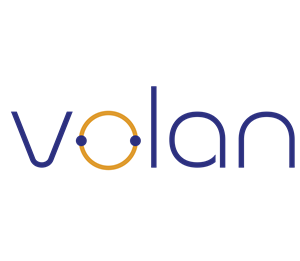Asset Tracking vs. People Positioning
Asset tracking locates physical objects while people positioning locates people. Know what to look for in each solution and how each solution drives different benefits.
Defining Asset Tracking and People Positioning
Asset tracking is defined as the method of identifying and locating physical assets. Physical assets are typically computers, vehicles, tools, and equipment.
Asset tracking is a tool to keep track of inventory; however, it differs from inventory because assets are typically used internally and not for sale. Companies utilize asset tracking to understand asset utilization, to understand which assets add value and what upgrades are needed to extend asset lifecycles.
People positioning is defined as the method of analyzing the location and movement of people over time. Your employees are your most high-value assets, but people positioning fundamentally differs from asset tracking. In asset tracking, locating things is as simple as recording a location on a shelf. People cannot be treated as objects. People are inherently dynamic, making “last known location” an insufficient tracking measure.
Regarding your workforce, the most valuable information comes from movement. As people enter and exit the workspace or move within it, they create continuous location data points. People positioning utilizes both live and historical location data to reveal insights into workforce optimization, labor costs, and safety.
Asset Tracking vs. People Positioning
Use Cases and Benefits
Asset tracking and people positioning may appear to serve overlapping use cases, but the two solutions are separate and drive different fundamental benefits.
Asset Tracking Benefits
|
People Positioning Benefits
|
The goal of asset tracking is to achieve greater security and higher utilization of tools and physical equipment. Employees reduce inefficient time while locating equipment and extend the life of assets by tracking maintenance.
People positioning use cases focus on driving cost savings through productivity and safety. Employees are your high-value assets being analyzed. Accurate profit and loss tracking accurately captures labor cost per SKU to optimize pricing, prioritize high-margin SKUs or eliminate unprofitable ones. Automated attendance and safety alerts eliminate manual processes to drive efficiency without additional oversight.
People Positioning Cost Analysis OutcomeWhen matched to production data (e.g., job # or yield), companies can have unprecedented visibility into actual productivity and labor cost and allocation.
|
Tracking Technology and Processes
Asset tracking technologies and processes vary significantly in complexity and use case as determined by needs for asset mobility, location accuracy, and tracking frequency. Larger physical assets with simpler needs for location accuracy may be tracked using barcodes or RFID tags. Employees scan these items to access maintenance records or record location information.
Mobile assets require frequent data transmission through satellites or network technologies such as Wi-Fi, GPS, or Bluetooth. Each positioning technology varies in reliability, accuracy, ease of installation, and overhead cost.
People positioning technologies have much higher requirements for accuracy, reliability, and privacy. The application of people positioning can be built from several different real-time positioning technologies. Real-time location systems stem from networking technologies such as Bluetooth Low Energy (BLE), Ultra-Wideband (UWB), RFID, and Wi-Fi. People positioning software may also include the use of machine learning and advanced analytics.
Asset tracking software often fails to translate into people positioning applications because it isn’t built with big data processing in mind. People positioning software must be nuanced in recognizing user privacy while accurately quantifying productivity metrics. When layered with advanced analytics and AI, the vast volumes of movement data gathered from people positioning technologies can unlock unrealized value.
Finding the right technology platform with robust analytics is critical for revealing valuable insights to optimize operational efficiencies. With the rapid advancement of location technologies, tracking solutions are now highly accessible and easy to deploy.
For a more comprehensive comparison of location technologies, refer to our RTLS blog post.
Why implement separate asset tracking and people positioning systems?People are your most high-value assets and the most complex to analyze and understand. Current asset tracking solutions on the market are not purpose-built with people in mind. While objects stay on the shelf until needed, people are mobile and complex. Finding the right solution built on the best technology platform is key to accurate reporting.
Bluetooth Low Energy is recognized as highly dependable, accurate, and quick to deploy. Volan Technology’s credit card-sized badges are unobtrusive and compact while providing real-time location data with accuracy within a meter. |
Conclusion
Asset tracking and people positioning are similar in that they focus on gathering location data to improve operations. The difference lies in the technology requirements and benefits for each use case. Asset tracking simply concerns the last known location and condition of physical assets, whereas people positioning uses real-time data to analyze productivity and identify cost savings.


